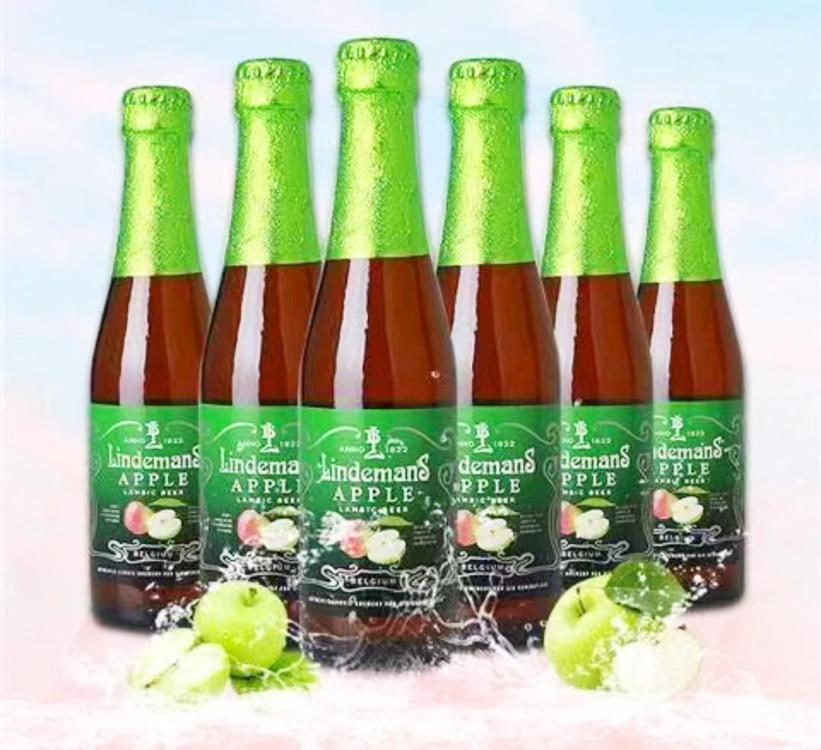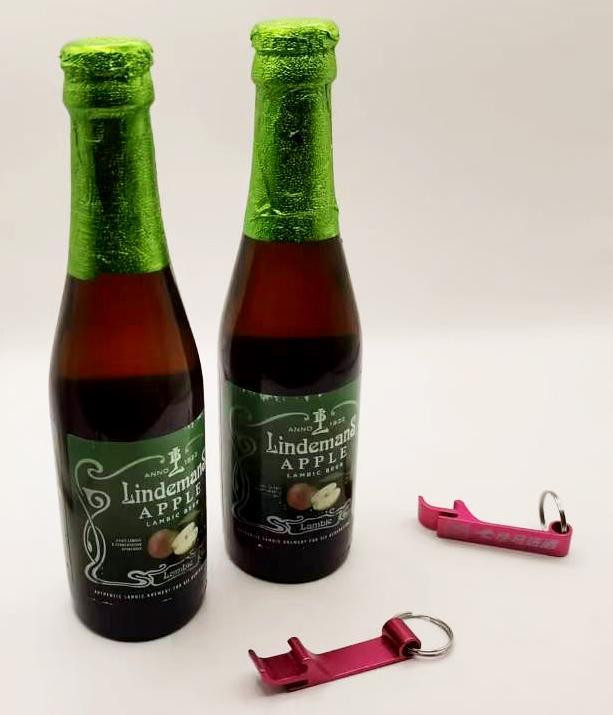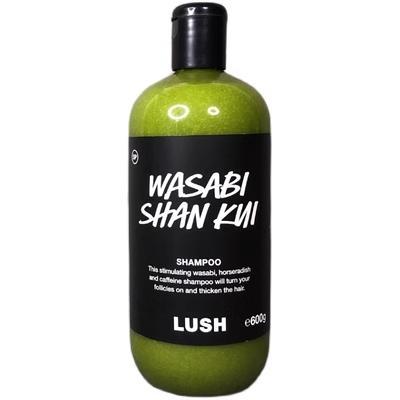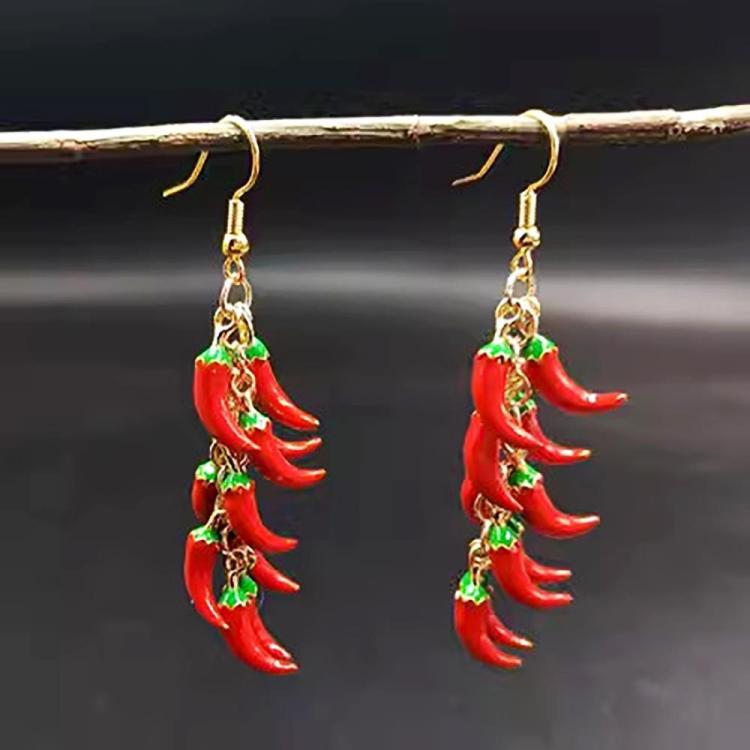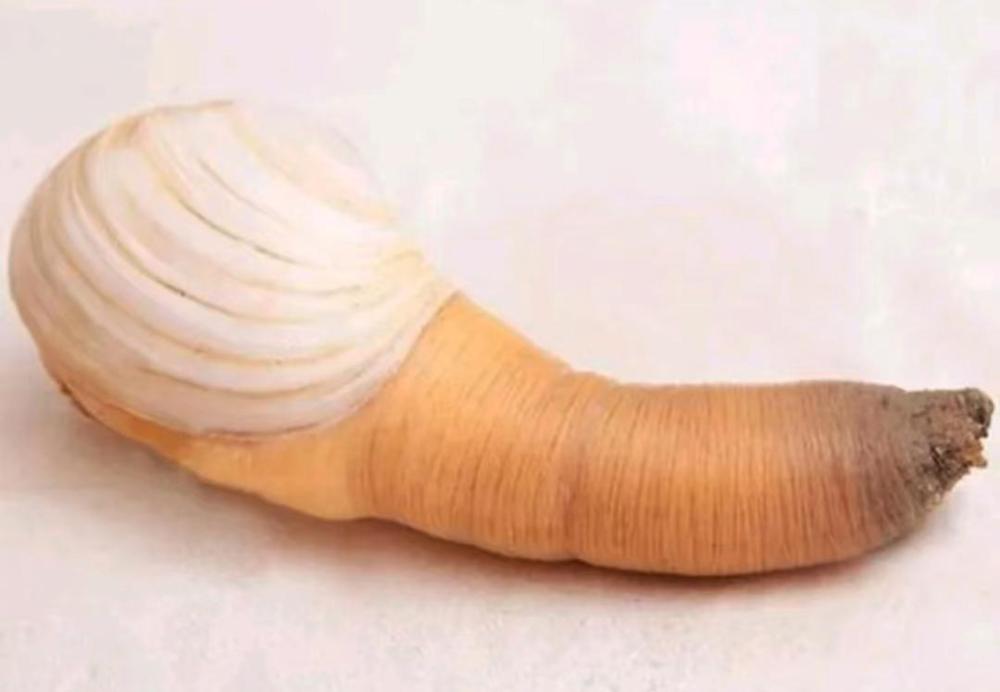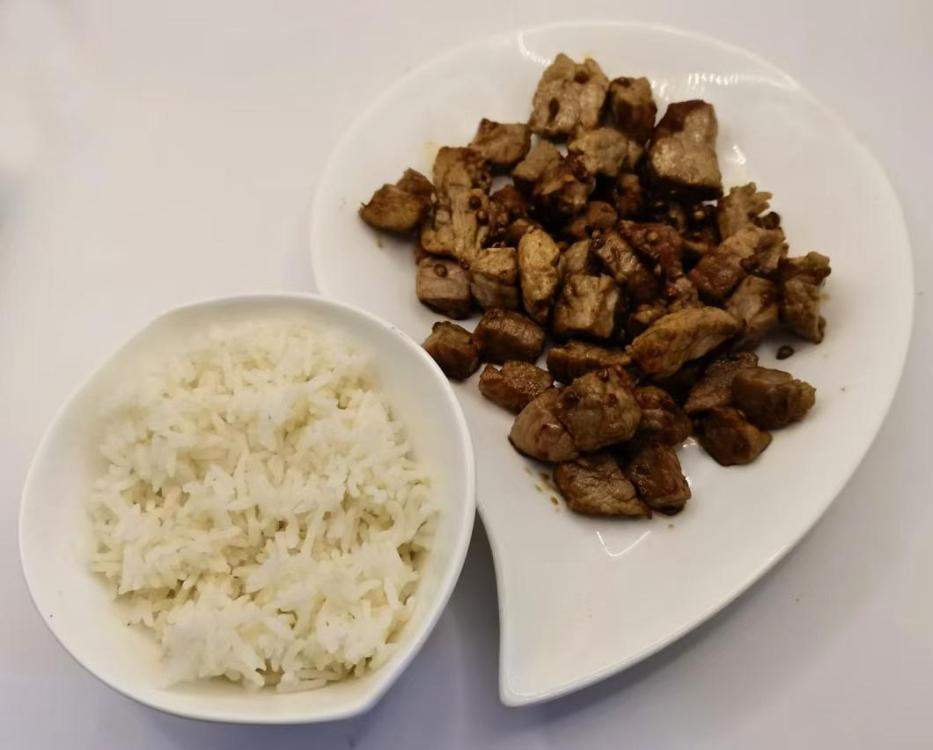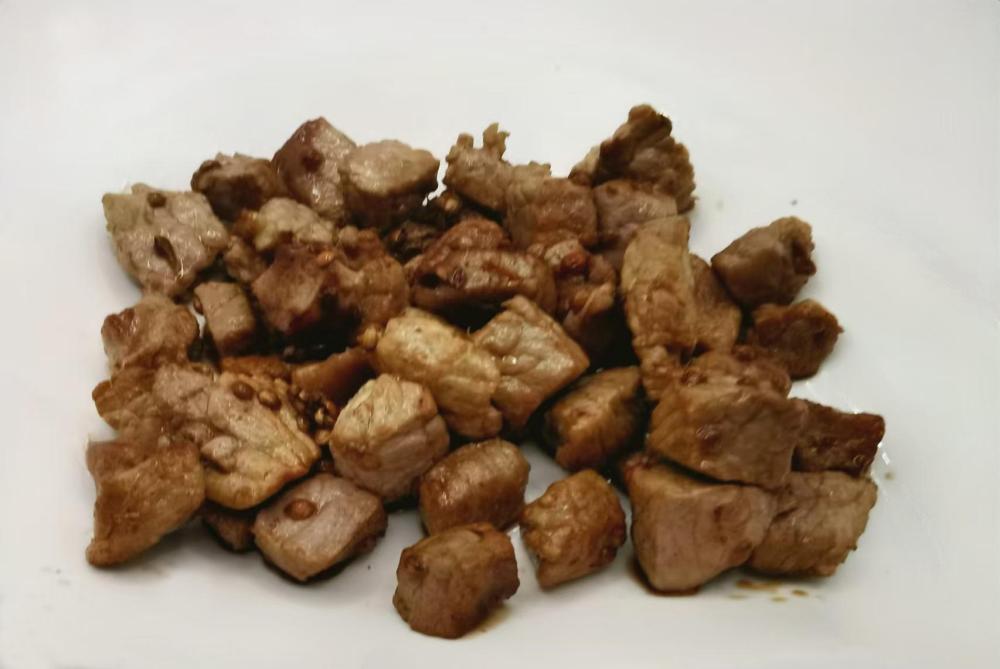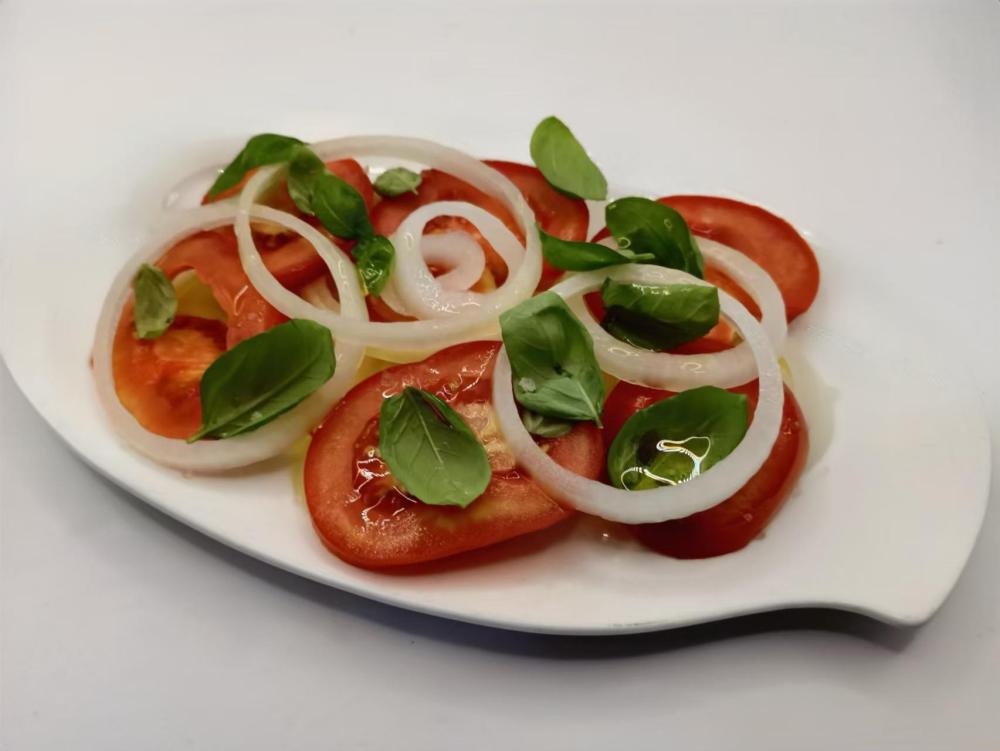-
Posts
16,761 -
Joined
-
Last visited
Content Type
Profiles
Forums
Store
Help Articles
Everything posted by liuzhou
-
One of the less appealing sights in the local supermarkets and markets are these trays of gloop known as 鱼杂 (yú zá), which basically means 'fish mixture', but really means '鱼内脏 (yú nèi zàng).' This means 'fish inner organs' and is what those of you who clean your own fish almost certainly throw away. It is the maw, liver and intestines of unidentified fish but probably carp. The maw is tasteless but is prized for texture; the liver is, in my view, inferior; and the intestines are pointless. But surprisingly popular. Added to soups and hotpots. I'll eat them, but never go looking for and certainly never cook.
-
Bulk buying of food is rare here in China, largely because, in general, people prefer shopping for fresh food on a daily basis. Canned and packaged foods are much less common than in the west. In fact canned foods are very rare. Supermarkets carry very little frozen foods - mostly dumplings. Maybe this explains an odd phenomenon I’ve often encountered. Having successfully utilised some Belgian apple beer into moules marinières, I decided to get in a few bottles for future use – I like me some mussels. The only store I’ve found stocking said beer is on the other side of the city so I order it for delivery. It turns up within the hour. On the shopping app, the company’s ad lists: 1 bottle = ¥9.50 6 bottles = ¥73.50 (12.2 per bottle) 12 bottles = ¥139.50 (11.63 per bottle 24 bottles = ¥295.00 (12.30 per bottle) The more you buy, the more expensive it gets! Not an uncommon feature of Chinese shopping. In one supermarket I used to frequent it was cheaper to take all the cans out of a six pack of beer and put them into your basket separately – one of the staff often came to help me! They were then scanned individually and saved me a fortune over the years. The staff member just shrugged when I questioned her. Not her job. I've seen the same with instant noodles and other goods. I'm planning on buying one a day until I build up a collection! Image from Meituan shopping app.
-
Traditional Moules Marinière (ie made with cider rather than wine). Unfortunately, I can't find French cider here but managed to get a Belgian lambic apple beer as mentioned here. It worked well, though not so dry as the real thing. So, garlic and shallot were softened in butter, cider added followed by the green-lipped mussels then covered and left a few minutes till the mussels open then added parsley and served with crusty bagette. The broth was excellent and mussels always are anyway! Happy mouth. Vive la France!
-
Not yet, but probably will. The thing is I actually like them! Just not the industrial version. I may buy some at the market later. However, once I've drunk the six-pack of beer, who knows what I'll do?
-
After a bit of a lull in the six-pack beer delivery chain, unexpected gifts have resumed (at least for once). This turned up last night. Braised duck tongues with soy sauce, five-spice mixture and twenty-preservative-and-fake-flavour-mixture.
-
Actually, they don't use ponies. They use donkeys for food and other deliveries. At least, donkeys is the local slang. e-驴 (e-lǘ) means 'electric donkeys' and is the name given to electric scooters, which 99% of them use. This one is parked outside my apartment building now, alongside many others. There are millions of them in the city. Literally.
-
This is a riff on devilled kidneys. I'm calling it "devilish kidneys". Pork kidneys and shiitake mushrooms fried in butter and olive oil with French whole grain mustard, Worcestershire sauce, paprika, S&P. Finished with coriander leaf and Chinese chives. Served over buttered whole meal toast.
-
This is odd. Today, I was planning ahead for tomorrow's lunch and decided I really would like to make Moules Mariniere, in the traditional style with Normandy cider. No chance. I've never been able to find any cider here. The nearest I can get is this imported Lindeman's Apple Lambic Beer. Not really what I want but I thought I'll give it a try. I ordered two bottles had it delivered as the only store that carries it is on the other side of the city. It arrived safely, but to my surprise, they included a 'free' promotional bottle opener - one for each bottle! Why? They don't seem to be single use! I already have several bottle openers. The writing on them is the name of the company and translates as Speedy Horse Delivery Alcohol.
-
I am I the only one to find this combination unappealing? 芥末章鱼味 (jiè mo zhāng yú wèi) means 'mustard (and) octopus flavour'. The first two characters are also used for fake 'wasabi'. I'm 99% sure these contain neither mustard or wasabi, but the related but much cheaper horseradish. Real wasabi is rare and expensive. It is 山葵 (shān kuí) in Chinese; セイヨウワサビ (seiyō wasabi) in Japanese. I think I'd rather eat my octopus with this. At least they admit it's fake in the smaller print, but I don't tend to treat my hair as if a type of sushi!
-
In my never ending quest to enhance your sartorial elegance and fashionability, I turn to accessories, specifically in the auditory area. What could be better to start with than some fried eggs? On a health kick? Maybe some fruit would suit. Dragon fruit or for a bit of a tang, citrus fruits. Or perhaps, the ever popular avocado? Feeling spicy. Some chilli. Of course, different people have different capsaicin tolerance, so take your pick. And after all that you may need this! All images from Taobao.com Shopping Portal
-
Chicken and matsutake. Shaoxing wine, garlic, chilli, coriander leaf, Chinese chives. Served with rice and a side of stirfried garland chrysanthemum.
-
This interesting looking specimen, Panopea generosa, is a giant clam native to the north-eastern Pacific, mainly from Washington State and British Columbia but also found from Alaska to California. It is also farmed in East Asia. They have a life expectancy of around 140 years, but have been known to live up to 179 years. They are sometimes referred to as Glycineris generos, an outdated appellation or as Panopea abrupta, which is now extinct. Their shells are around 15 – 20+cm / 6 to 8 inches long, but their siphons, the part we eat, are much longer and can be 1 metre / 3 ft 3 in. Its popular English name, geoduck, is derived from the native American, Lushootseed language once spoken around Puget Sound, Washington State. Today, the language is only used ceremonially and is considered critically endangered. The meaning of the word in Lushootseed is disputed, with the main contenders being ‘genitals’ or ‘dig deep’, the first relating to the phallic appearance and the second to its function, as it’s used in burrowing into sand. Geoduck is pronounced and also sometimes spelled ‘gooeyduck’. In Chinese they are 象拔蚌 (Mandarin: xiàng bá bàng; Cantonese: zoeng6 bat6 pong5). This means 'elephant trunk clam’. Mainly sliced and used in hotpots here, but eaten as sashimi in Japan, where it is called アメリカナミガ, meaning ‘American mussel’. In South Korea it is 코끼리조개 (elephant clam) and is eaten raw but also cooked in soups or stews. I’ve never seen these in any store or market, but they are available for delivery. I’m fairly sure 99% or more are eaten in restaurants rather than at home. These cost me ¥100 / $14.10 each for delivery, but up to three or even four times that in restaurants.
-
I'd seen these before in Thailand and Laos but never in China until today. 黄瓜花 (huáng guā huā), young cucumbers with their flowers. Used in Thailand in salads, but I suspect the locals will cook them or add to soups. I already have plans for today, but I'll probably buy some tomorrrow and make fritters of them, that being how I ate them in Thailand.
-
Absolutely. Have edited. Thanks.
-
Moules mariniere in a broth made from shallots, galangal, lemongrass, fish stock and Sauvignon Blanc. I got through a kilo of the critters, with some fresh bread. The image below is just under half of them. Happy mouth
-
-
To my great surprise, I've never listed galangal(e) (Alpinia galanga) in this topic. So now I remedy that. According to the OED, the word came into English from Old French galingal or garingal, which in turn came from the Arabic khalanjān or khaulinjān, believed to have entered that language from Chinese 高良姜 (gāo liáng jiāng), literally 'mild ginger from Ko', a historic prefecture of Guangdong Province. In modern Mandarin it is also known as S: 南姜; T: 南薑 (nán jiāng, literally 'southern ginger'), in reference to its being native to southern China and SE Asia. In Cantonese, it is naam4 goeng1. It is often called greater galangal in English to differentiate it from three other plants referred to as galangal - Alpinia officinarum (lesser galangal), Kaempferia galanga (kencur or sand ginger) or Boesenbergia rotunda (Chinese ginger, Thai: กระชาย (krachai), or fingerroot). It is more fibrous than ginger and has a more citrus and spicier taste.
-
Picked up some mangoes today. Those yellow samples weigh 575g / 1lb 4oz in total whereas the green giant is a weighs 916g / 2lb 3oz on its own. The green is ready to eat, but the yellows need a day or two on the counter. I intend using the green one to make my mango relish tomorrow morning, but I'll just eat the yellows.
-
-
Almost certainly. There are dozens of very similar examples on the internet.
-
I'm much the same. Seldom eat breakfast - never have. Even if I do, it's more brunch. Occasionally, I even skip lunch, making my evening meal the sole food of the day. Since I retired dinner is now earlier, usually at 7. When working, it was nearer 8 or even 9. People always chide me for this, but I've been the same for over 70 years; it isn't likely to change now. My mother only ate one meal a day from retiring at 60 and into her nineties.
-
-
What kind of breadcrumbs are you using? I use panko and double coat them. Never had one split or crack.
-
I don't have to imagine. Many of the better fish and chips places in the UK still use beef fat.





